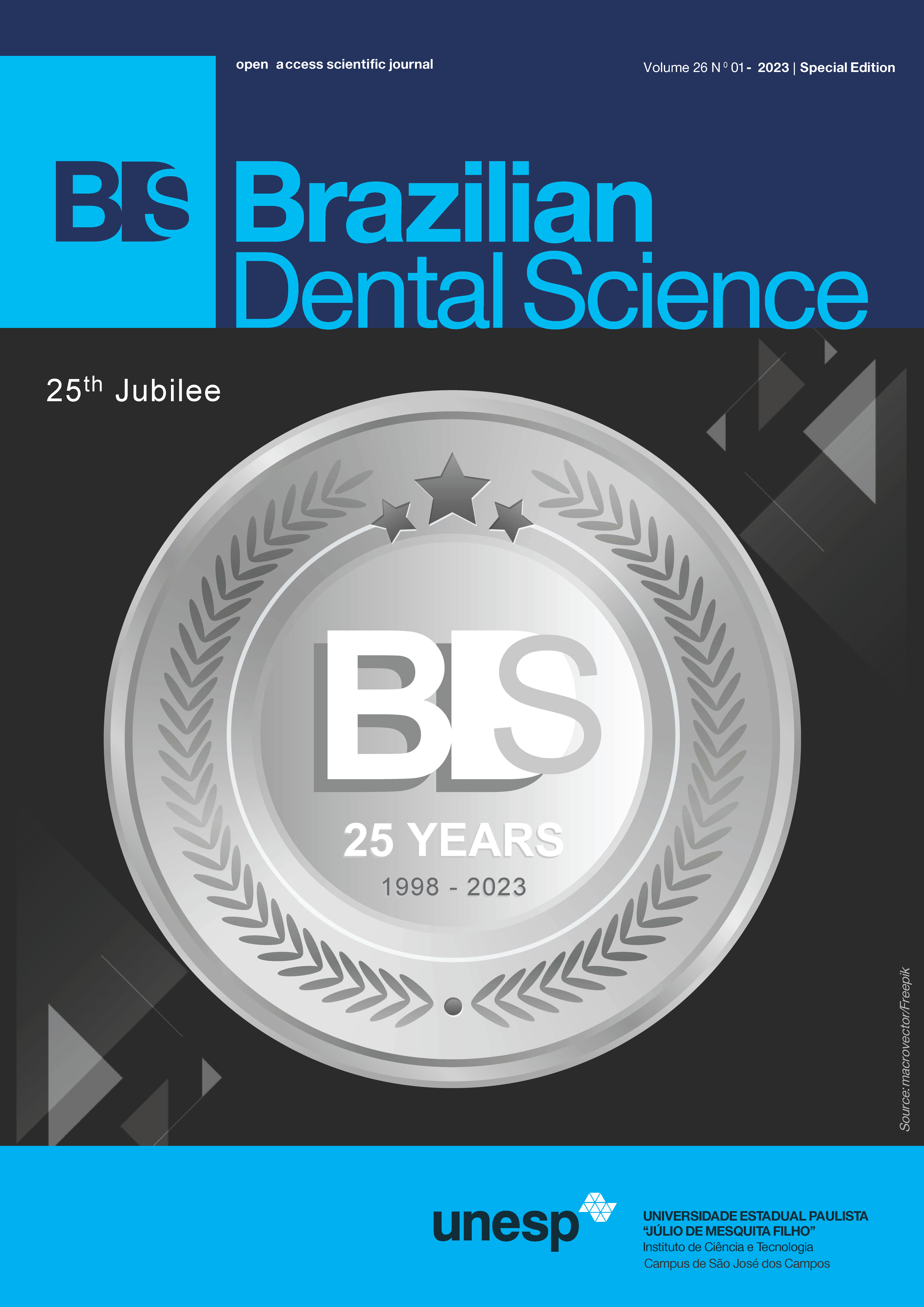Wear of dental ceramics
DOI:
https://doi.org/10.4322/bds.2023.e3638Abstract
Based on the development of adhesive dentistry, minimally invasive restorations in ceramics are used as alternatives
to restore a tooth. Dental ceramics are largely applied in the dentistry field mainly due to their esthetic and
mechanical strength. One of the ceramic properties to be well known before its use is the wear resistance that
should be compatible with the antagonist wear behavior to avoid unwanted performance. Therefore, several
methods have been performed to assess the ceramic materials wear behavior considering different conditions
present in the complex oral medium. This study aimed to compile the methods used to investigate dental ceramics
wear and to describe the wear mechanisms involved on them. Obtaining and analyzing data is also addressed to
discuss the results obtained from different methods, as well as the clinical analysis of wear and future perspectives
on this topic. In conclusion, many methodologies are available to measure the ceramic wear. Therefore, the
methods must be selected based on the clinical significance of each study and should follow previously reported
parameters for standardization, allowing literature comparison.
KEYWORDS
Dental Materials; Ceramics; Dental wear; Dental restoration wear; Methods.
Downloads
Published
How to Cite
Issue
Section
License
Brazilian Dental Science uses the Creative Commons (CC-BY 4.0) license, thus preserving the integrity of articles in an open access environment. The journal allows the author to retain publishing rights without restrictions.
=================




























